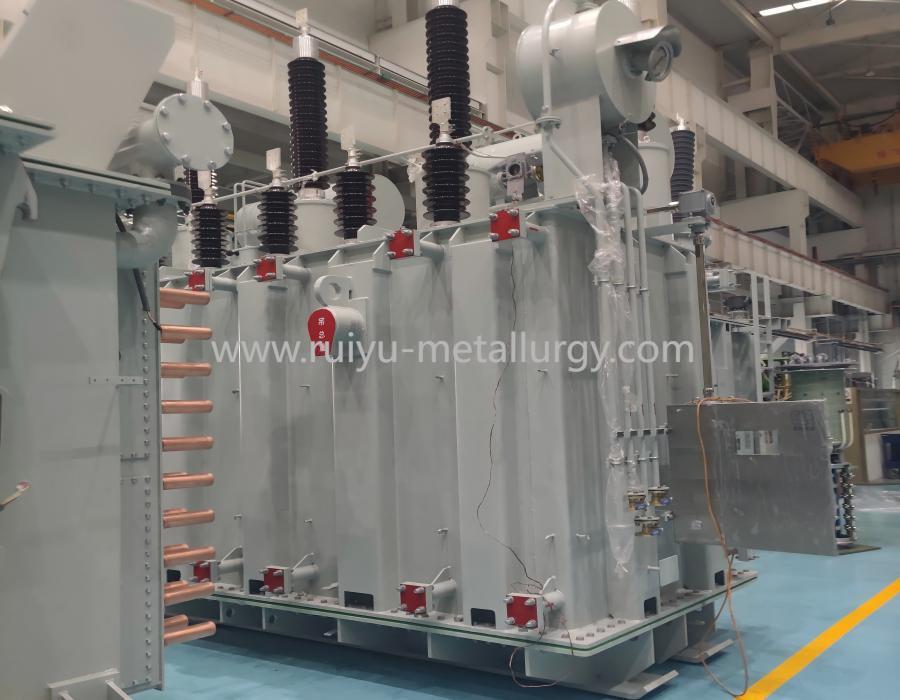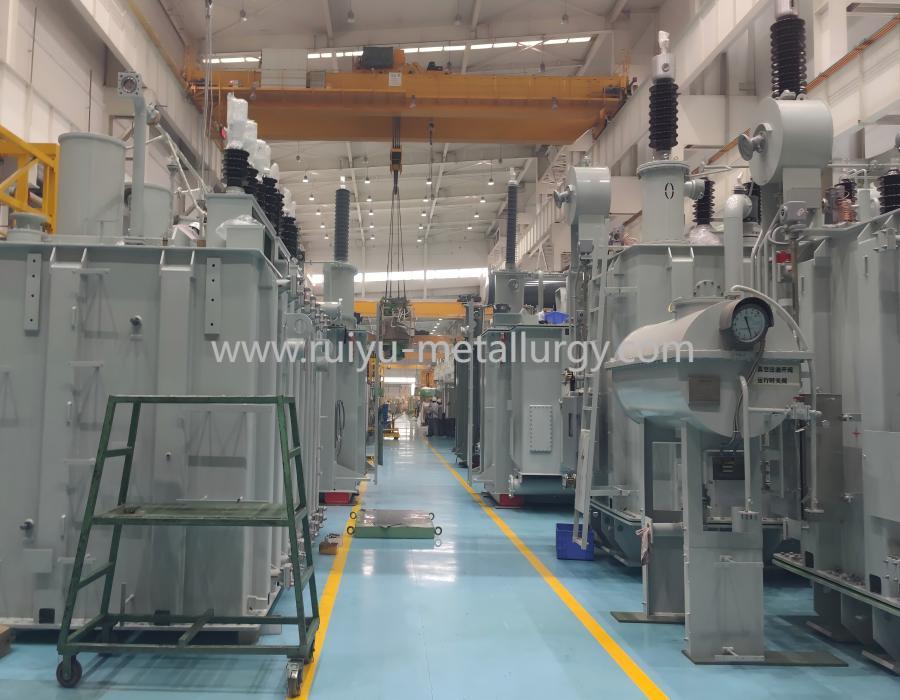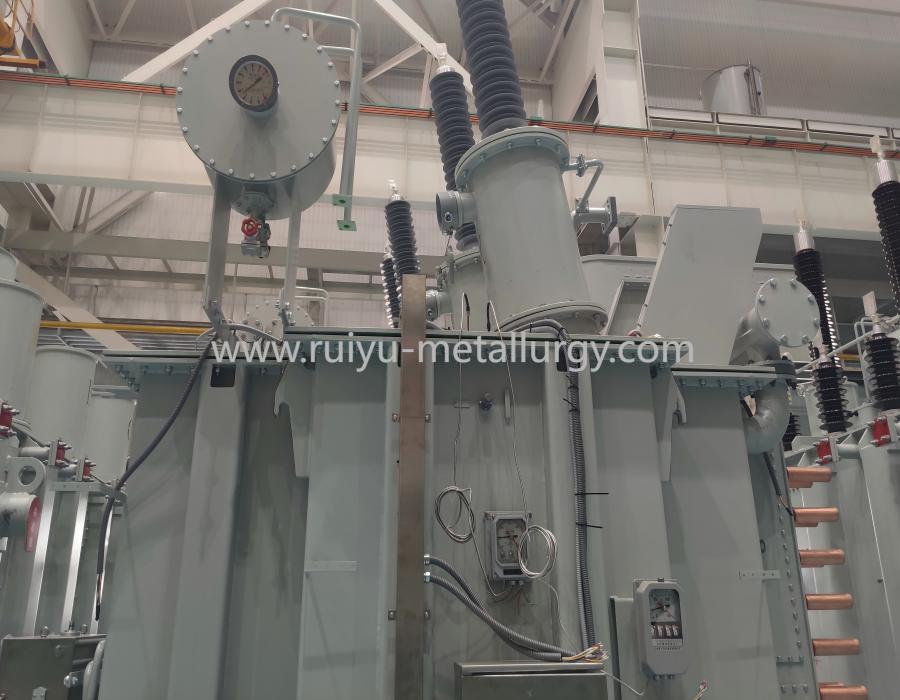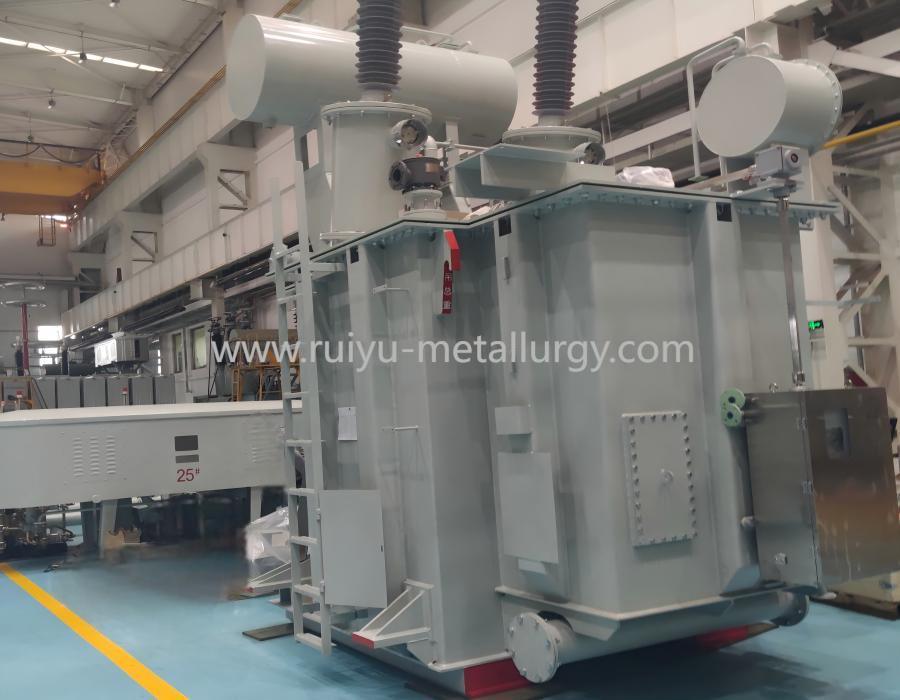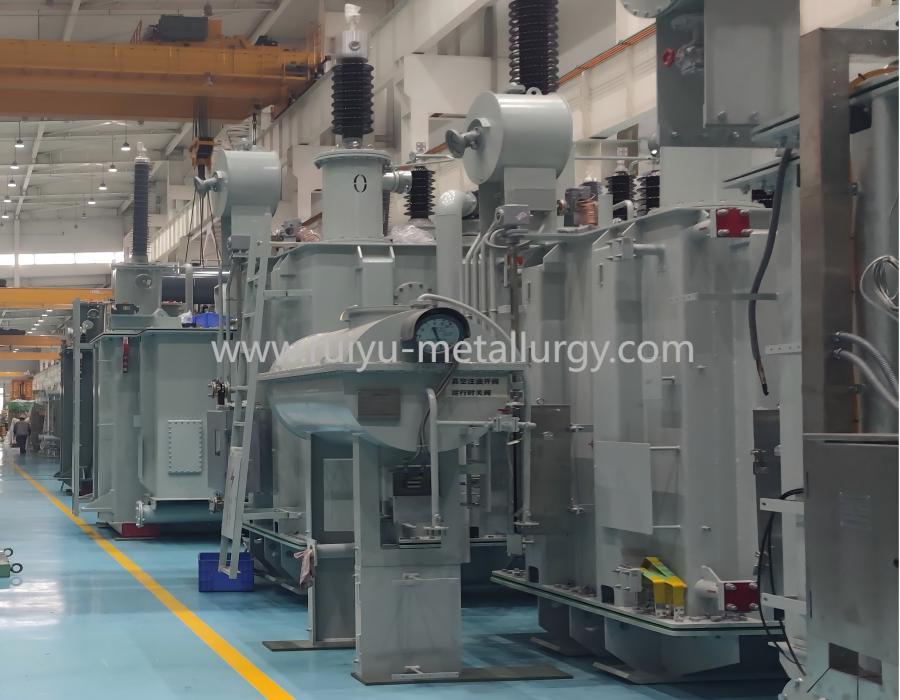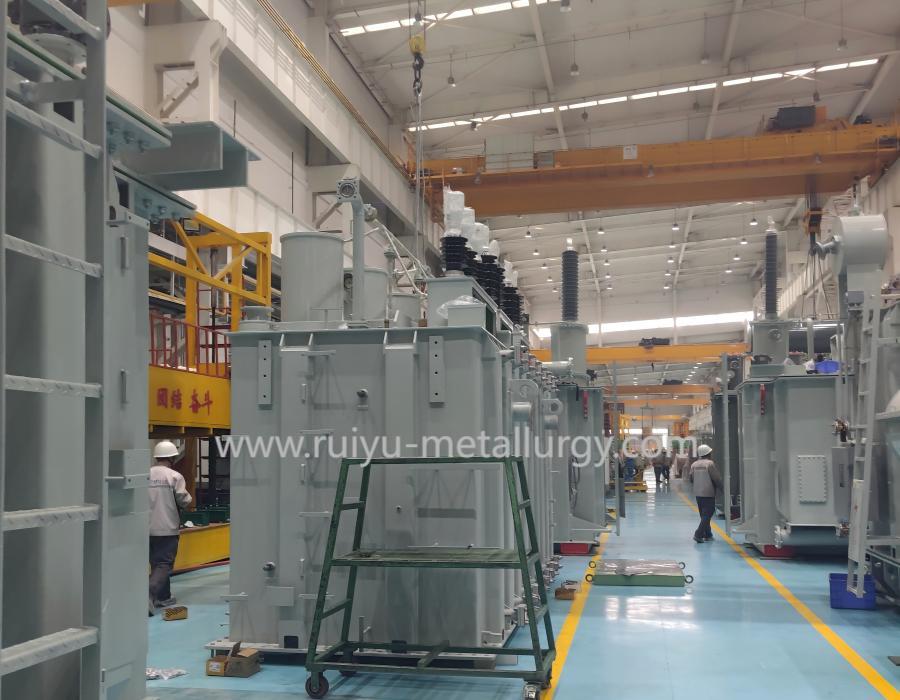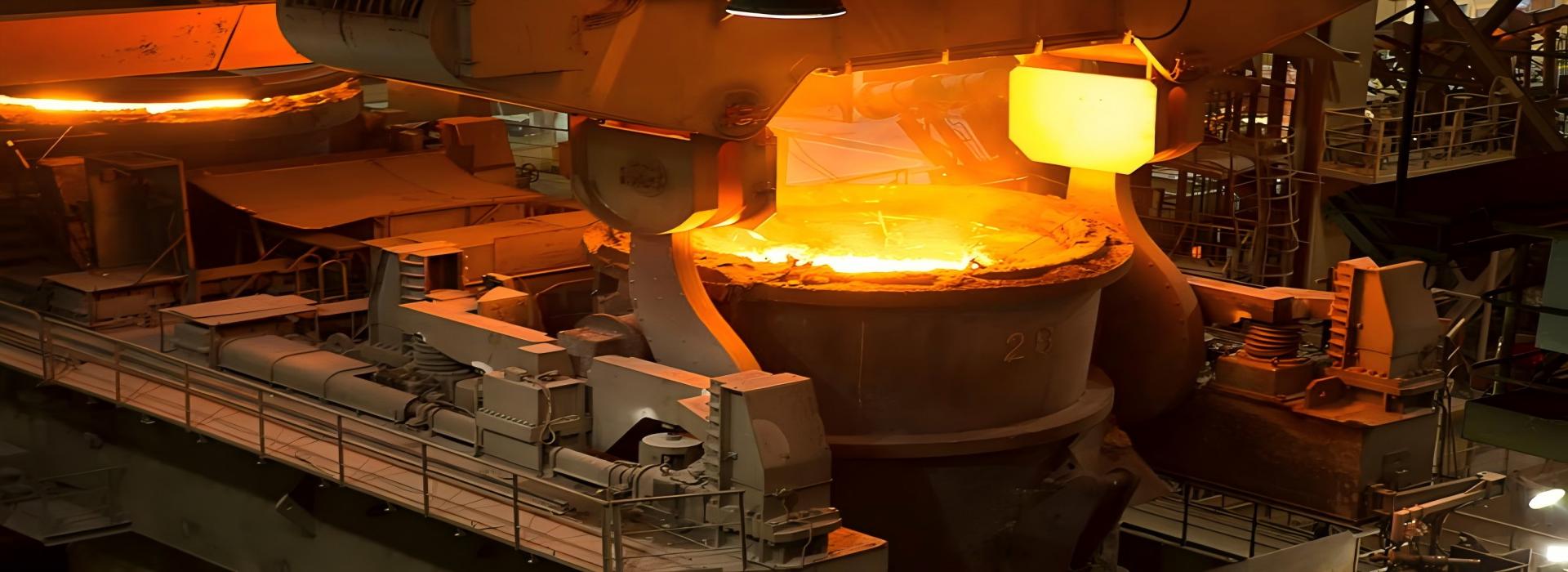
Transformer
Transformer is a key electric equipment in steel production, mainly used to provide stable and adjustable high power electric energy for electric arc furnace (EAF), refining furnace (LF), rolling mill and other equipments. Its design needs to adapt to the steel production of high loads, frequent inrush current and complex working conditions, its performance directly affects the production efficiency and energy consumption.
- the main types of transformers for steel mills
(1) Electric arc furnace transformer (EAF transformer)
Purpose: power supply for electric arc furnace, the grid high voltage (such as 35kV, 110kV) converted to suitable for electric arc furnace low voltage high current (such as 400 ~ 1200V).
Features: High overload capacity: need to withstand the melting period short time 2~3 times the rated current impact.
Multi-speed voltage regulation: the secondary side voltage is divided into multiple levels (e.g. 20~30 levels) to adapt to the high voltage during melting period and the low voltage demand during refining period.
High impedance design: limit short circuit current (impedance voltage usually 8%~12%), protect power grid and equipment.
(2) Refining furnace transformer (LF furnace transformer)
Purpose: To supply power to ladle refining furnace and provide stable current for precise temperature control.
Characteristics: low voltage, high current: lower voltage on the secondary side (e.g. 200~400V), higher current (up to 100kA or more).
Fast response: need to cooperate with automatic electrode adjustment system to stabilize the arc in real time.
(3) Transformer for rolling mill
Application: power supply for hot and cold rolling mill units (e.g. main drive motor of rolling mill).
Features: High dynamic response: adapt to frequent start-stop and load fluctuation.
Harmonic suppression: equipped with filtering device to reduce the impact of harmonics generated by frequency converter on the power grid.
- Parameter
| parameter | Arc furnace transformer typical value | Typical values of refining furnace transformers |
| Rated capacity | 60~150 MVA | 10~30 MVA |
| Primary side voltage | 35kV,110kV,220kV | 10kV,35kV |
| Secondary side voltage | 300~1200V (multi-adjustable) | 200~400V (continuously adjustable) |
| Secondary side current | 30~100 kA | 50~150 kA |
| Impedance voltage | 8%~12% | 5%~8% |
| Cooling-down method | Forced oil circulation air cooling (OFAF) | Forced oil circulation water cooling (OFWF) |
- Special design requirements
Short-circuit resistance: need to pass the short-circuit test of IEC 60076-5 or GB 1094.5 standard.
Harmonic tolerance: Arc furnace transformer needs to withstand 5th, 7th and other characteristic harmonics (THD≤5%).
Tap changer: adopt on-load voltage regulator switch (such as MR, ABB brand), voltage regulation range ±10%~±15%.
Insulation material: Nomex paper or epoxy resin casting, high temperature resistance (H-class insulation, 180℃).
Cooling system: double circuit cooling design to ensure stable operation under high temperature.
4.Selection and Matching
Capacity matching:
Transformer capacity (MVA) = EAF power (MW) / Power factor (0.8~0.85)
For example: 100 tons of EAF power of about 80MW → transformer selection of 100MVA (taking into account the overload margin).
Voltage matching:
The secondary side voltage needs to cover the melting period (high voltage) and refining period (low voltage) requirements.
Grid compatibility:
The short circuit capacity (SCC) of the grid needs to be evaluated to avoid a sudden drop in grid voltage due to transformer input.
5.Operation and Maintenance
Monitoring indicators: oil temperature (≤85℃), winding temperature (≤120℃).
Oil chromatography analysis (detection of H₂, CH₄ and other gases warning of internal faults).
Common faults: poor contact of tap changer (need to be cleaned regularly).
Insulation aging (voltage withstand test every 5 years).
Our company has many years of experience in the production and sales of transformers, and is in the leading position technologically in China, and our products are sold to more than 60 countries in the world.
The above parameters are for reference, if you have any specific requirements, please contact us in time.

